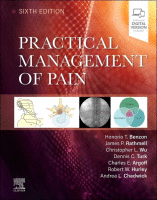Physical Address
304 North Cardinal St.
Dorchester Center, MA 02124

Key Points The endocannabinoid system is a complex biologic system composed of endogenous CBR and their respective agonists. It is involved in the regulation of multiple physiologic and cognitive processes in the human body to maintain homeostasis. Endocannabinoids are endogenous…

Key Points There are three broad classes of muscle relaxants: antispasmodic, antispasticity, and combination agents. Muscle relaxants may treat muscle spasticity in two manners. First, they can modify the stretch reflex arc, either by reducing the excitatory signals or by…

Treatment of chronic pain involves understanding the delicate interplay of nociceptive, neuropathic, and nociplastic mechanisms involved in any given pain syndrome’s pathophysiology. Research into the underlying pathways for chronic pain has provided the mechanistic basis to utilize numerous non-opioid medications…

Key Points Anti-depressants can be effective for treating neuropathic pain independently of their actions on comorbid depression. The analgesic effects tend to occur more rapidly and at lower doses than those used for treating depression. The primary mechanism of action…

Introduction The treatment of pain in patients with comorbid addiction or substance use disorders (SUDs) is complex. 1 The terms substance use disorders and addiction are used interchangeably in this chapter. Traditionally, chronic pain and SUDs have been treated by…

Key Points Chronic pain inflicts an enormous human toll of suffering and disability and is often associated with psychiatric comorbidities such as emotional distress, negative affect, depression, and anxiety. There is a corresponding relationship between mood disorder and opioid misuse,…

Key Points Opioids are an essential tool in a physician’s toolbox, but their addictive nature and lethality have also plagued humanity throughout history. The development of OxyContin in 1996, combined with an advertising campaign and sponsorship of more than 20,000…

The use of naturally occurring plant material for the relief of pain dates back to early times. Advances in antipyretic and analgesic medications began in the late 1800s with the development of salicylic acid, antipyrine, phenacetin, and acetaminophen (APAP). These…

General Considerations of Opioid Administration Derivatives from the opium plant have been described as analgesics and used for pain control since 3500 bc . It was not until 1806 that a pure opioid substance was isolated. This substance was called…

Introduction Pain is defined by the International Association of Pain (IASP) as “an unpleasant sensory and emotional experience associated with, or resembling that associated with actual or potential tissue damage.” Given that pain is not only a symptom but also…